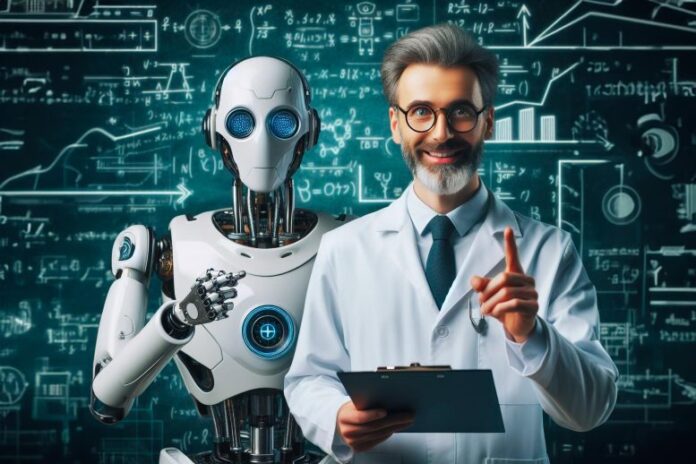Researchers at the Carnegie Mellon University in the United States have designed an AI powered robot that could soon be an efficient lab partner to assist scientists in their laboratorial work, or in the future may even act as a guide to scientists.
The AI-empowered robot, named CoScientist, demonstrated its prowess by autonomously learning about complex chemical reactions and then designing a laboratory procedure to make them. Known in organic chemistry as ‘palladium catalyzed cross couplings’ these chemical reactions won the team of scientists who invented it the 2010 Nobel Prize in chemistry. The importance of these reactions come from umpteen applications they now have in industrial and academic fields.
What was even more impressive in CoScientist’s achievement was that while the Nobel Prize winning reactions were the result of years of painstaking research and repeated experiments, the CoScientist system achieved the same process in just a few minutes, and got it right on the very first attempt.
The abilities that CoScientist demonstrated point to its potential to assist scientists to productively use AI to increase the pace and number of scientific discoveries, as well as improve the replicability and reliability of experimental results. Beyond the chemical synthesis tasks demonstrated by the system, its high level of efficiency means it could be used for multiple other scientific purposes.
At the core of Coscientist’s software and silicon-based parts are the large language models that comprise its artificial ‘brains’. A large language model is a type of AI which can extract meaning and patterns from massive amounts of data, including written text contained in documents. Through a series of tasks, the research team tested and compared multiple large language models, including GPT-4 and other versions of the GPT large language models made by the company OpenAI.
Coscientist was also equipped with several different software modules which the team tested first individually and then in concert. The software modules allowed CoScientist to do things that all research chemists do — search public information about chemical compounds, find and read technical manuals on how to control robotic lab equipment, write computer code to carry out experiments, and analyze the resulting data to determine what worked and what did not.
High-tech robotic chemistry equipment is commonly used in laboratories but such robots are usually controlled through computer code written by human chemists. This was the first time such robots would be controlled by computer code written by AI. Researchers put CoScientist through several tests to examine its capabilities and assess its potential. As the machine learned from each test conducted its abilities grew significantly.
In the final test, CoScientist had to put its various modules and training together and fulfill the researchers command to perform a cross-coupling reaction known as ‘Suzuki and Sonogashira reactions’. Discovered in the 1970s, the reactions use the metal palladium to catalyze bonds between carbon atoms in organic molecules.
The Nobel-Prize winning ‘Suzuki Coupling’ (for short) reactions have proven extremely useful in producing new types of medicine to treat inflammation, asthma and other conditions. They are also used in organic semiconductors in Organic Light Emitting Diodes (OLED) found in many smartphones and monitors.
Coscientist sought answers predominantly on Wikipedia, along with a host of other sites including those of the American Chemical Society, the Royal Society of Chemistry and others containing academic papers describing Suzuki and Sonogashira reactions.
In less than four minutes, CoScientist was able to design an accurate procedure for producing the required reactions using chemicals provided by the team. When it sought to carry out its procedure in the physical world with robots, it made a mistake in the code it wrote to control a device that heats and shakes liquid samples.
Without any prompting from the research team, CoScientist spotted the problem, referred back to the technical manual for the device, corrected its code and tried again. The results were analyzed and found to hold the spectral hallmarks of Suzuki and Sonogashira reactions.
The researchers envision a future where AI-assisted systems like CoScientist become a solution to bridge the gap between the unexplored vastness of nature and the fact that trained scientists are in short supply — and probably always will be. Moreover, while scientists have human needs, like eating, sleeping and taking time off, the human-guided AI enabled robots can ‘think’ and work around the clock. Robots such as CoScientist could run autonomously, discover new phenomena, new reactions, new ideas, all the time.
It can also significantly decrease the entry barrier for basically any field. For example, if a biologist untrained in Suzuki reactions wanted to explore their use in a new way in the biological field, they could ask the assistance of CoScientist to help them plan experiments. This could lead to a massive democratization of resources and understanding.
Science is an iterative process of trying something, failing, learning, and improving. This process can be substantially accelerated by systems such as CoScientist, and bring about dramatic changes on how science works in future.

















